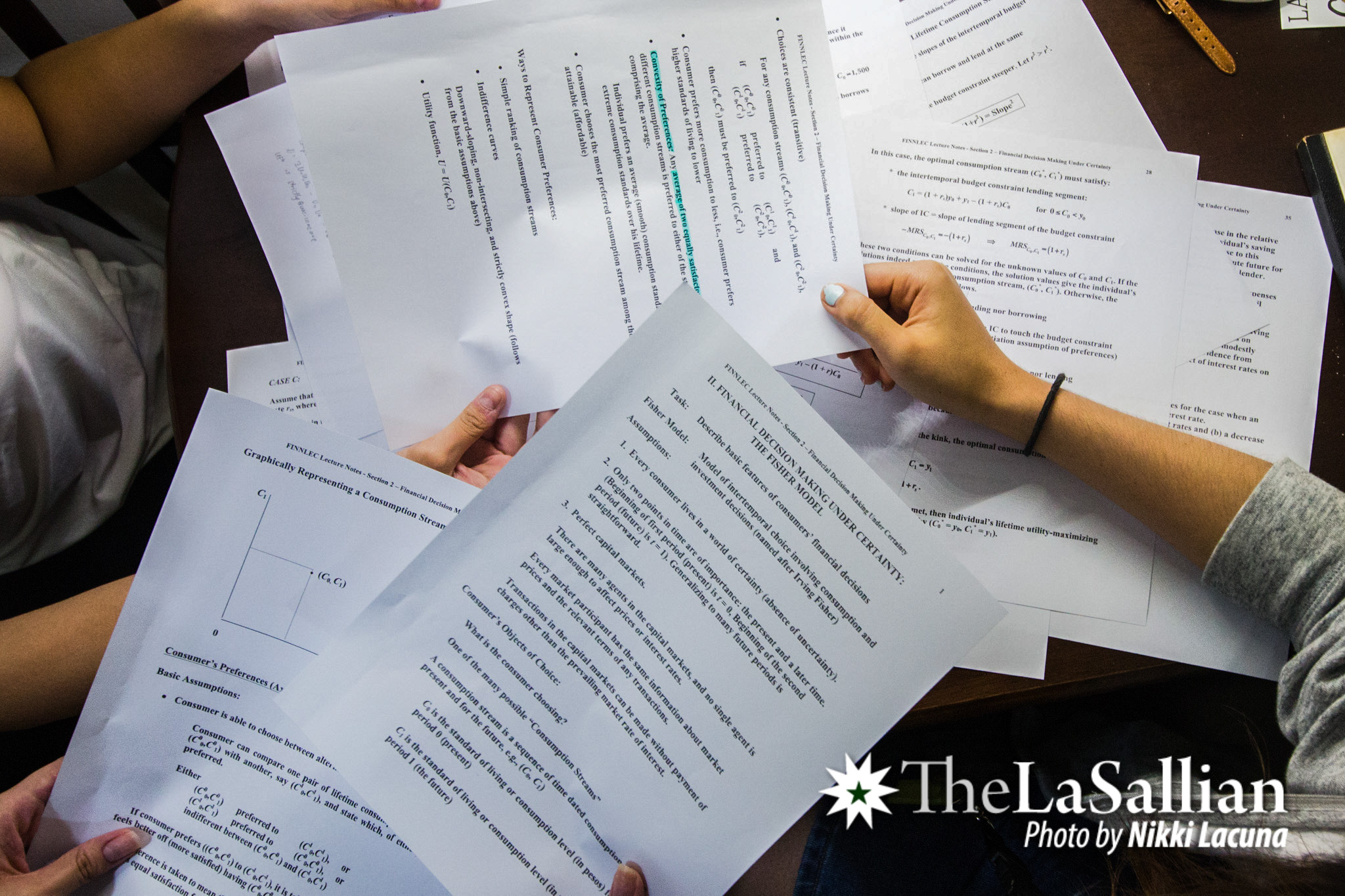Pencils down, highlighter caps on, papers pushed and piled to the side—the day ends with fingers colored in streaks of neon and decorated with paper cuts.
It has been a day spent sitting, discussing, and dissecting journal articles and peer reviews with their colleagues and mentors. They have a ton of deadlines to catch up to, their minds reeling and toiling over the figures in their data.
This is the life of research assistants.
Mentorship and apprenticeship
Monica Policarpio (MS-PSM, ‘12) took interest in becoming her Advanced Theories of Personality professor’s research assistant in the hopes of better understanding how he makes scientific inferences. “What sparked my interest is that I thought about modeling how he thinks and that, for me, is more important to learn,” she explains. She was fortunate enough to be taken under his wing to aid him in his new research.
The job didn’t only entail the responsibility of supporting her professor, but being a research assistant also placed her in an environment where she could learn and grow academically. Working under the wing of her mentor—someone she looks up to—Monica gained the opportunity to see how he works behind the curtain, “The only way to learn how one thinks is to interact with that person,” she explains. Collaborating with him has driven her to stir her mind to think more innovatively and creatively.
Jamie Loristo was another one whose professor helped pave the way to her becoming a research assistant. Immediately after graduating from the University of the Philippines in 2017, she took on the role of being a research assistant in a department project that was offered by her thesis adviser, and she has been working there ever since. Jamie echoes Monica’s sentiment, taking pride in the learning experience she received as a research assistant, “In our setting, we are given the chance to take initiative, to step up—which I think is good. It allows us to grow.”

A day in the life
It’s not a typical eight-hour job. Being a research assistant doesn’t only mean perusing through academic books and scientific journals; the job isn’t all about research work. Research assistants are also tasked to organize events, attend trainings, and participate in field work and conferences. Jamie explains how every day is a fresh experience.
With no set schedules, research assistants can also enjoy the flexibility of working depending on the project. For Jaime, working on projects is the best part of the job, “Among the things we did, the most exciting so far [was] being able to present in an international conference where we shared one of the outputs of
our project.”
Being a Lasallian research assistant
The first project
Monica ever worked on as a research assistant was funded by DLSU to give her a
good foundation. Fast forward seven years, Monica continues to not take the
opportunity for granted. “I learn a lot from inspiring people, which makes me
aspire for more. To be trained in DLSU to do research is a privilege,”
she adds.
Looking back on her experiences working as a research assistant in DLSU, she acknowledges the new perspectives she gained on what academics do outside the classroom. “To be a research assistant gives you a front [row] seat on how the science works from the scientists who actually work on it,” she explains.
Liberated and empowered
In only a span of a few years, research assistants develop a more advanced skill set in pursuit of research. When asked about what she found to be the best part of being a research assistant, Monica enthusiastically says, “I get to be asked about what I think, and that is what is empowering and exciting.”
Such an act of respect for one’s opinion is liberating from the shackles that bind people to their fears of being judged, of making mistakes, of the likelihood that they might end up performing short of their personal expectations. But having a mentor, an idol, who gives their utmost trust could be empowering, as Monica believes. People gain the courage and the confidence they need to be free to “play and explore” the world if only to learn a bit more about its hidden mysteries and intricate designs.
Although the scientific study would involve laid out steps to obtain accurate results, Monica sees the alternating idea of freedom with research. “What I like most is when I have the freedom to explore and discover things to determine what can be contributed in the conceptualization and the design of the study,” she points out, mentioning her current study on decision making in relation with melody preferences—a study that is close to her heart as a researcher.
Although, there are still times when it would also be wise to hesitate in the face of uncertainty. “Among the projects to be pursued, hesitating is okay because we have to weigh factors about its feasibility and value, among other things,” reminds Monica.
Of endless pursuit
Working tirelessly and endlessly in pursuit of advancing research, driven by their interest to contribute in their respective fields, research assistants dedicate years of their lives to assist in studies that can serve a greater purpose in society.
Their days end with excitement for what the next project holds. A well
sought out plan which holds uncertain results—only in research will their
hypothesis be proven valid or not. One thing is certain—in the institute they
reside exist endless ideas and questions waiting to
be answered.
